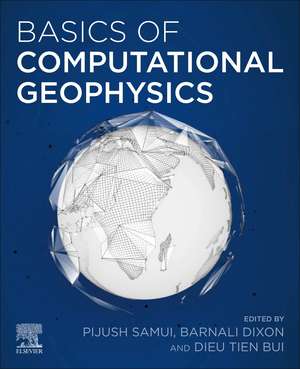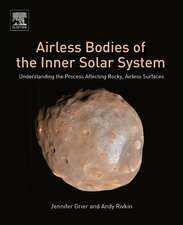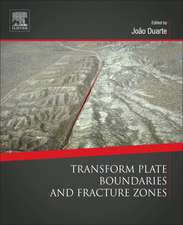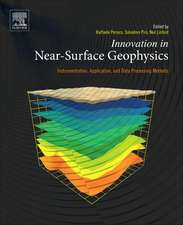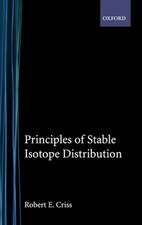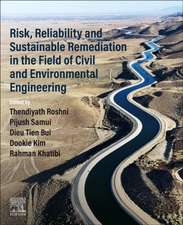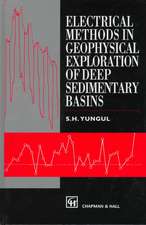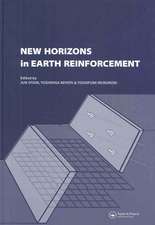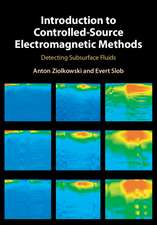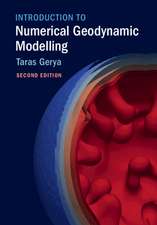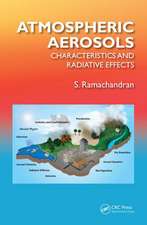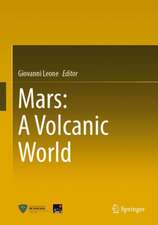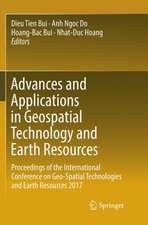Basics of Computational Geophysics
Editat de Pijush Samui, Barnali Dixon, Dieu Tien Buien Limba Engleză Paperback – 30 noi 2020
- Covers various advanced computational techniques for solving different problems in geophysics, including the use of Big Data and artificial intelligence
- Includes case studies that provide examples surrounding practical applications
- Provides an assessment of the capabilities of commercial software
Preț: 823.96 lei
Preț vechi: 1098.80 lei
-25% Nou
Puncte Express: 1236
Preț estimativ în valută:
157.67€ • 168.60$ • 131.46£
157.67€ • 168.60$ • 131.46£
Carte tipărită la comandă
Livrare economică 10-24 aprilie
Preluare comenzi: 021 569.72.76
Specificații
ISBN-13: 9780128205136
ISBN-10: 012820513X
Pagini: 432
Ilustrații: Approx. 200 illustrations
Dimensiuni: 191 x 235 x 27 mm
Greutate: 0.74 kg
Editura: ELSEVIER SCIENCE
ISBN-10: 012820513X
Pagini: 432
Ilustrații: Approx. 200 illustrations
Dimensiuni: 191 x 235 x 27 mm
Greutate: 0.74 kg
Editura: ELSEVIER SCIENCE
Cuprins
Part I: COMPUTATION & GEOPHYSICS APPLICATIONS
1. Synthetic ground motions of the 2005 Kashmir M7.6 earthquake at the bedrock and at surface using stochastic dynamic finite fault modelling with a dynamic corner
Hamid Sana
2. Global particle swarm optimization technique in the interpretation of residual magnetic anomalies due to simple geo-bodies with idealized structure
Arkoprovo Biswas and Anand Singh
3. Emerging Techniques to Simulate Strong Ground Motion
Sandeep Arora, Parveen Kumar and A. Joshi
4. Earthquakes: Basics of seismology and seismic computational techniques
Naresh Kumar Sr., Devajit Hazarika Sr. and Kalachand Sain
5. Significance and limit of electrical resistivity survey for detection sub surface cavity: a case study from, Southern Western Ghats, India
Mayank Joshi, Alka Gond, Prasobh. P. Rajan, B. S. S, Padma Rao B and Vivekanandan Nandakumar
6. A review on Geophysical parameters comparison in Garhwal and Kumaun Himalaya region, India
Sandeep Arora and Parveen Kumar
7. Liquefaction Susceptibility of High Seismic region of Bihar considering Fine Content
Sunita Kumari and Sufyan Ghani
8. Evaluating the reliability of various geospatial prediction models in landslide risk zoning
Chalantika L. Salui
9. Fractals and Complex networks Applied to Earthquakes
Denisse Pasten
10. Liquefaction as a seismic hazard: scales, examples and analysis
Hamid Sana
11. Landslide Prediction and Field Monitoring for Darjeeling Himalayas: A case study from Kalimpong
Neelima Satyam
12. Improvement of Shear Strength of Cohesive Soils by Additives: A Review
Amir H. Gandomi and Tamur Salik
13. Static stress change from 6 February, 2017 (M 5.8) earthquake Northwestern Himalaya, India
Mahesh prasad Parija, Arkoprovo Biswas and Shubhasmita Biswal
14. Remote Sensing for Geology-Geophysics
Surajit Panda and Krishnendu Banerjee
PART II: COMPUTATION & GEOSCIENCE APPLICATIONS
15. Prediction of Petrophysical Parameters using Probabilistic Neural NetworkTechnique
Nagendra Pratap Singh
16. Interpretation and Resolution of multiple structures from residual gravity anomaly data and application to mineral exploration
Arkoprovo Biswas
17. On fractal based estimations of soil subsidence.
Tatyana P. Mokritskaya and Anatolii Tushev
18. A Neural Network to predict spectral acceleration
Amir H. Gandomi, Ali R. Kashani, Mohsen Akhani and Charles V. Camp
19. Body tide prediction
Sung-Ho Na
20. Time series analysis of hydrometeorological data for the characterization of meltwater storage in glaciers of Garhwal Himalaya
Amit Kumar, Akshaya Verma, Rakesh Bhambri and Kalachand Sain
21. Trends in Frequency and Intensity of Tropical Cyclones in the Bay of Bengal: 1972-2015
OMVIR SINGH and Pankaj Bhardwaj
22. Application of machine learning models in hydrology: case study of stream temperature forecasting in the Drava River using coupled wavelet analysis and adaptive neuro-fuzzy inference systems model
Senlin Zhu, Marijana Hadzima-Nyarko and Ognjen Bonacci
1. Synthetic ground motions of the 2005 Kashmir M7.6 earthquake at the bedrock and at surface using stochastic dynamic finite fault modelling with a dynamic corner
Hamid Sana
2. Global particle swarm optimization technique in the interpretation of residual magnetic anomalies due to simple geo-bodies with idealized structure
Arkoprovo Biswas and Anand Singh
3. Emerging Techniques to Simulate Strong Ground Motion
Sandeep Arora, Parveen Kumar and A. Joshi
4. Earthquakes: Basics of seismology and seismic computational techniques
Naresh Kumar Sr., Devajit Hazarika Sr. and Kalachand Sain
5. Significance and limit of electrical resistivity survey for detection sub surface cavity: a case study from, Southern Western Ghats, India
Mayank Joshi, Alka Gond, Prasobh. P. Rajan, B. S. S, Padma Rao B and Vivekanandan Nandakumar
6. A review on Geophysical parameters comparison in Garhwal and Kumaun Himalaya region, India
Sandeep Arora and Parveen Kumar
7. Liquefaction Susceptibility of High Seismic region of Bihar considering Fine Content
Sunita Kumari and Sufyan Ghani
8. Evaluating the reliability of various geospatial prediction models in landslide risk zoning
Chalantika L. Salui
9. Fractals and Complex networks Applied to Earthquakes
Denisse Pasten
10. Liquefaction as a seismic hazard: scales, examples and analysis
Hamid Sana
11. Landslide Prediction and Field Monitoring for Darjeeling Himalayas: A case study from Kalimpong
Neelima Satyam
12. Improvement of Shear Strength of Cohesive Soils by Additives: A Review
Amir H. Gandomi and Tamur Salik
13. Static stress change from 6 February, 2017 (M 5.8) earthquake Northwestern Himalaya, India
Mahesh prasad Parija, Arkoprovo Biswas and Shubhasmita Biswal
14. Remote Sensing for Geology-Geophysics
Surajit Panda and Krishnendu Banerjee
PART II: COMPUTATION & GEOSCIENCE APPLICATIONS
15. Prediction of Petrophysical Parameters using Probabilistic Neural NetworkTechnique
Nagendra Pratap Singh
16. Interpretation and Resolution of multiple structures from residual gravity anomaly data and application to mineral exploration
Arkoprovo Biswas
17. On fractal based estimations of soil subsidence.
Tatyana P. Mokritskaya and Anatolii Tushev
18. A Neural Network to predict spectral acceleration
Amir H. Gandomi, Ali R. Kashani, Mohsen Akhani and Charles V. Camp
19. Body tide prediction
Sung-Ho Na
20. Time series analysis of hydrometeorological data for the characterization of meltwater storage in glaciers of Garhwal Himalaya
Amit Kumar, Akshaya Verma, Rakesh Bhambri and Kalachand Sain
21. Trends in Frequency and Intensity of Tropical Cyclones in the Bay of Bengal: 1972-2015
OMVIR SINGH and Pankaj Bhardwaj
22. Application of machine learning models in hydrology: case study of stream temperature forecasting in the Drava River using coupled wavelet analysis and adaptive neuro-fuzzy inference systems model
Senlin Zhu, Marijana Hadzima-Nyarko and Ognjen Bonacci
